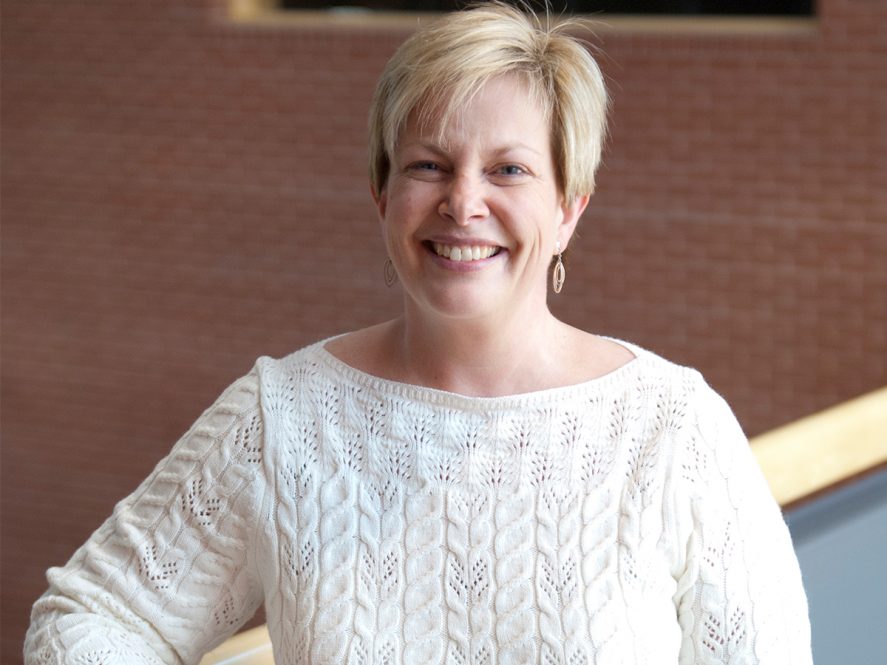Carolyn Teschke, professor and department head of molecular and cell biology at UConn, has been awarded a Fulbright Scholar Award to study virus assembly and evolution at the University of York, in the United Kingdom.
Teschke applied for the scholarship after talking with colleagues at the University of York for months about a collaborative project working on the process of virus assembly. The Fulbright, which is awarded by the U.S. State Department and international sponsors, will allow her to conduct research in the U.K. for four months.
“I am so pleased and excited to receive this prestigious award to study in the U.K.,” says Teschke. “My hosts at the University of York, Professors Riedun Twarock, a mathematician who studies virus architecture, and Fred Antson, who studies large bacteriophages, will work with me to mathematically model how viruses assemble using experimental data generated in my lab.”
Teschke’s research focuses on understanding how a virus puts itself together inside an infected cell. Using a model system of bacteriophage P22, a well-known type of virus that infects bacteria, Teschke’s lab group models how a herpes virus would attack, assemble, and replicate inside a human cell.
“Rather than studying a herpes virus, growing cell cultures and risking getting infected, we use this simple model system,” Teschke says. “If we understand how our model system works, hopefully that information will assist scientists that study herpes viruses and help them develop antivirals.”
An antiviral for the herpes virus might prevent it from replicating once it attacks a cell, thus reducing the chances of someone getting sick.
Teschke hopes to use her lab’s data and Twarock’s mathematics expertise in the geometry of virus capsids, or its outer protein-based shell, to understand on a more detailed level how the different proteins of P22 assemble.
“It’s almost like a dance, the way the virus proteins have to come together in a specific order, with a particular affinity, or tightness, to make the capsid,” Teschke says. “If we have an idea how tight the interaction between the proteins must be, we can make an antiviral that interrupts that process in the early stages.”
By collaborating with Antson, Teschke hopes to understand how a virus evolves to grow bigger over time, and whether she can change the proteins in her model virus to become bigger, like the ones Antson works with. This would help her understand the process of virus evolution, where a virus accumulates mutations that affect the viral capsid geometry.



